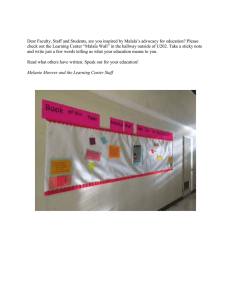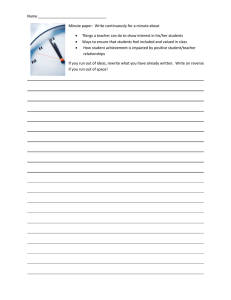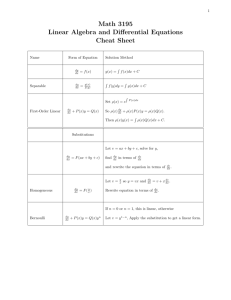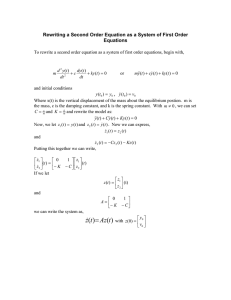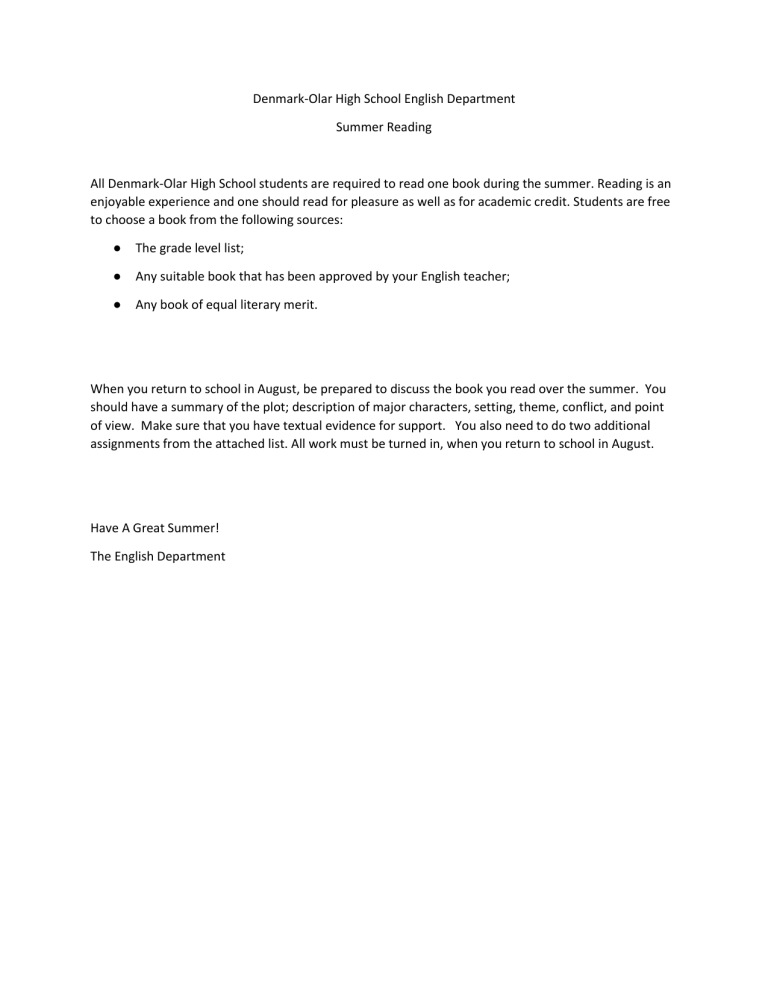
Denmark-Olar High School English Department Summer Reading All Denmark-Olar High School students are required to read one book during the summer. Reading is an enjoyable experience and one should read for pleasure as well as for academic credit. Students are free to choose a book from the following sources: ● The grade level list; ● Any suitable book that has been approved by your English teacher; ● Any book of equal literary merit. When you return to school in August, be prepared to discuss the book you read over the summer. You should have a summary of the plot; description of major characters, setting, theme, conflict, and point of view. Make sure that you have textual evidence for support. You also need to do two additional assignments from the attached list. All work must be turned in, when you return to school in August. Have A Great Summer! The English Department Summer Reading Book Report Choices CHOOSE TWO 1. Rewrite the story in a different time period. You may rewrite the story in a futuristic or past setting if it is set in the present. Stories set in the past may be written in the present or future. You may also choose to rewrite only a particular event in the story. 2. Write an extension of the story, explaining future occurrences in characters' lives 3. Write a parody of a book. This kind of a humorous imitation appeals to many children. Parody the entire book or one scene. 4. Put together a cast for the film version of a book. Imagine the director/producer wants a casting director to make recommendations. Decide who would be the actors and actresses. Include photos and descriptions of the stars and tell why each is "perfect" for the part. Write a report to convince the producer of the selections. 5. Write a letter to the author of a book. This shouldn't be a class assignment, and any letter should be entirely individual. While authors may not have time to respond to each letter they receive (they might not get their next book done if they did), they do enjoy letters from their readers -- especially those that discuss the book on children's own terms. Send letters in care of book publishers if you can't locate the author's address in WHO'S WHO, CURRENT BIOGRAPHY, or other reference sources. 6. Write in the diary a main character might have written. Imagine you are the person in your book. Write a diary for a few days or weeks as he or she would have done. 7. Make a new book jacket. It should include an attractive picture or cover design, a summary of the book, information on the author and illustrator, and information about other books by the author. 8. Make a ceramic figure which illustrates a character or symbol from the book. 9. Make a diorama or shadow box depicting the setting, characters, or the theme that forms your book. Shoe boxes are ideal for this project. 10. Convert the events of a story into a ballad or song. Write the lyrics and music or adapt words to a melody by someone else. 11. Invent a product that one of the characters in the story could have benefited from using. Explain how your product works and why the character needs it. Include a drawing of the product you invented as well. 12. Is there a better solution to solving the problem than what the character(s) did? If so, what is it? Describe in detail. If not, why is the solution the author chose the best possible outcome? 13. Make a “top ten reasons for reading this book” list. For each reason, you must include justification. For example, if you say, “humor,” then include a funny quote and explain why that demonstrates humor. (if you dislike the novel, create a “top ten reasons for not reading this book” list!) 14. Create an Instagram feed for one of the characters in your novel using six pictures. All of your pictures should be symbols that directly relate to the story. Underneath each picture, provide a quote from the text that supports why you used that specific symbol. Don’t forget the character’s name and a brief bio for them! Grade 9 Suggested Reading List This list has been compiled from several sources including the American Library Association, the International Reading Association, and state reading lists, when available. The books on this list are not required reading nor is this intended to be an all-inclusive list. As always, parents and teachers are encouraged to review the selections to ensure the appropriateness for individual students. BOY 21 by Matthew Quick Clap When You Land by Elizabeth Acevedo On the Come Up by Angie Thomas Lord of the Flies by William Golding To Kill a Mockingbird by Harper Lee Every Day by David Levithan I Know Why the Caged Bird Sings by Maya Angelou The Lightning Thief by Rick Riordan Fahrenheit 451 by Ray Bradbury The Book Thief by Markus Zusak Animal Farm by George Orwell The Crossover by Kwame Alexander Brown Girl Dreaming by Jacqueline Woodson I Am Malala: How One Girl Stood Up for Education and Changed the World (Young Reader’s Edition) by Malala Yousafzai with Patricia McCormick The Chocolate War by Robert Cormier Mythology -Hamilton, Edith Copper Sun by Sharon Draper A Raisin in the Sun by Hansberry, Lorraine The Hobbit by Tolkien, J.R. The Story Of My Life by Helen Keller The War of the Worlds by H. G. Wells Great Expectations – Charles Dickens Les Miserables by Victor Hugo
